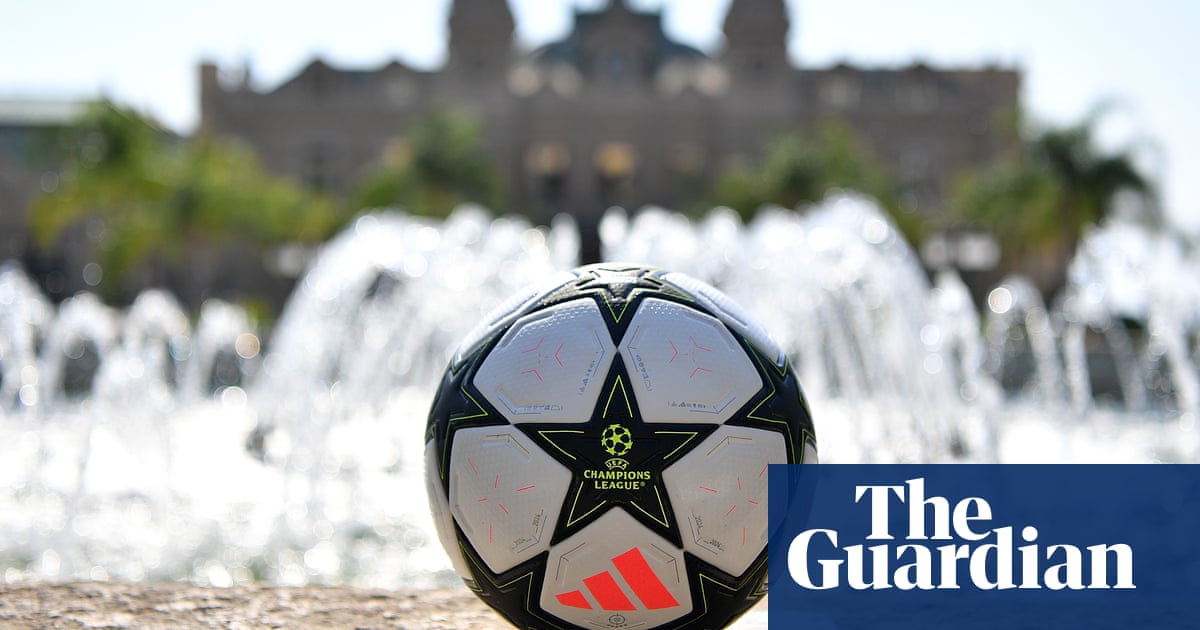How will the new format work?
This is a high-stakes experiment from Uefa, implemented initially for the 2024-27 Champions League cycle. The old group stage has been replaced by a single 36-team league table in which each team will play eight matches against as many different opponents, four at home and four away. It is known as a “Swiss model” and will shake down into a top eight, who all qualify directly to the knockout stage, with a further 16 sides contesting a playoff round in between. The teams finishing between 25th and 36th will be eliminated when the league phase concludes in January. The knockouts will look familiar, a round of 16 funnelling toward next May’s final in Munich, and they will be bracketed so each team can plot its potential path.
Why has it been implemented?
Broadly, Europe’s bigger clubs wanted a greater density of supposed glamour ties. Discussions had been carried out for several years; an original version that saw two places reserved for teams based on historical performance, rather than recent success, was scrapped in 2022 after unrest among clubs lower down the pecking order.
The new format, which had largely been agreed on by the Super League rebels before their attempted breakaway in 2021, will see each team guaranteed two matches against sides from their own pot. That will be music to the ears of the elite names in pot one, who believe games between each other will rake in the punters and, accordingly, the cash.
What could make it a success?
Perhaps those big ticket games will throw up enough thrillers to cast any fresh fears of a Super League into distant memory, keeping the giants happy while offering enough crumbs to those below. Maybe the matches between those in lower pots will also ensure some of the less storied names have a fighting chance of reaching the business end when all 18 concluding ties are played simultaneously on matchday eight. In such a large table, with relatively few games played, one or two victories could propel a Shakhtar Donetsk or Brest into contention for a run long into 2025.
What are the potential drawbacks?
There is more than enough football played these days and the wisdom of playing 144 games in order to eliminate just 12 teams may prove wobbly. While each matchday in the league phase will contain a marquee fixture or two, it is worth asking whether there will be enough jeopardy in those games to make them genuinely interesting. There has to be a question, too, over whether there are enough truly outstanding teams in Europe nowadays to create the fare Uefa hope for given the increased concentration of wealth and resources among very few.
While the bloated league table, and relatively minimal number of points available across eight games, should allow plenty of movement on the final matchday in January, there may be minimal excitement for fans in discovering whether their side has finished, say, 10th or 11th even if there are benefits in the knockout bracket. And perhaps the biggest question of all: will this new, expanded format quickly find the captive audience it needs?
How will Thursday’s draw work?
A new “hybrid concept” will replace the old-fashioned method that was purely based on picking balls from bowls. Each team will still be drawn out physically by hand before software designed by AE Live, a technology solutions provider that works with a range of major sports institutions, selects their eight opponents. No club can play another team from their own domestic league, and nobody can play more than two matches against sides from a particular country. Supporters with their fingers poised on Skyscanner can ease off: the fixture list, including the order in which matches are played, will not be published until Saturday.
after newsletter promotion
Does this make the draw vulnerable to a cyber-attack?
“We’re taking cybersecurity incredibly seriously,” said Dave Gill, the chief executive of AE Live. “Clearly this is a sensitive issue. I’m reluctant to go into details about what we’re doing but I can assure you we’ve taken all steps we can to make sure this is as safe and secure as possible.” Gill said his company was on the receiving end of attacks while working on the Qatar 2022 draw for Fifa after Russia’s illegal invasion of Ukraine. “We’ve experienced this,” he added. “We’ve been through risk assessments and put precautions in place.”
On Wednesday, Giorgio Marchetti, Uefa’s deputy secretary general and director of football, pointed out that the plan’s original iteration contained 10 group stage fixtures. That has been whittled down, but clubs and players will surely be keen to avoid the two legs of February playoffs. And if anyone ends up unhappy, whose fault is it really? “The need to play regular matches in Europe comes from the clubs, not Uefa,” Marchetti remarked. The message was perfectly clear: don’t blame us for fixture congestion or workload implications; blame those who wield the real power nowadays.
Is this format locked in forever?
Absolutely not. Everything remains up for grabs for the cycle from 2027 onwards and, while he doubled down on his belief that Uefa have hit upon a system that works for everyone, Marchetti did not commit to its long-term future when given the opportunity. There are figures in elite club football who genuinely believe the format offers a viable way forward; equally there are those who see it as a bridge to something different. The mid-sized clubs in the draw will certainly be keen to put together a run of last-24 finishes, as a minimum, in the Swiss model era. The overarching hope, for most of Europe at least, will be that it can head off any further attempts to create a Super League.
Thursday’s draw will be live online via Uefa’s website and YouTube channel from 5pm BST.
